Making Kolacky
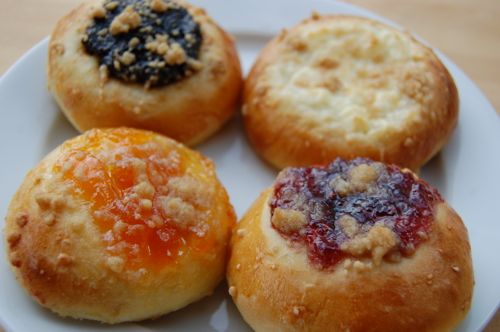
I been makin’ kolatch-kee for forty five years…was the mad refrain of a retired ninety-something baker who lived next door to a high school buddy of mine. Back then, as a cocky teenager hanging around in Riverside, Illinois, I thought it was pathetic. Nowadays I can imagine many far less pleasant things to have spinning around in my senile old brain. As a middle-aged man who appreciates a good kolache, I look back on that guy as sorta lucky. I don’t know what he would have thought of these. My guess is he’d have taken one look, waved his hand dismissively and walked the other way. That’s what makes guys like that great.
Begin by combining the wet ingredients including the melted butter in a bowl.
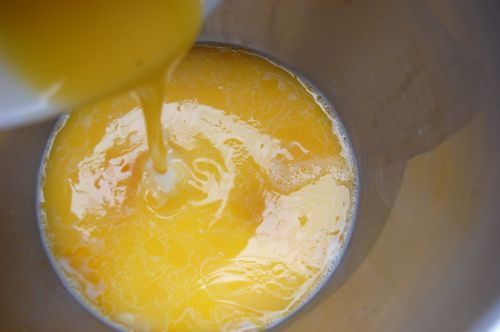
Combine the dry ingredients and whisk them together.

Combine the two mixtures in the bowl of a mixer and stir on low until everything is moistened.
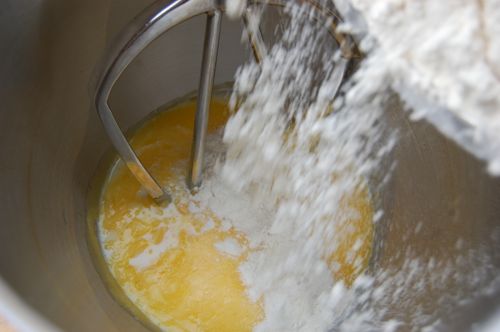
With everything wet, switch to the dough hook and knead on medium for 5-7 minutes.
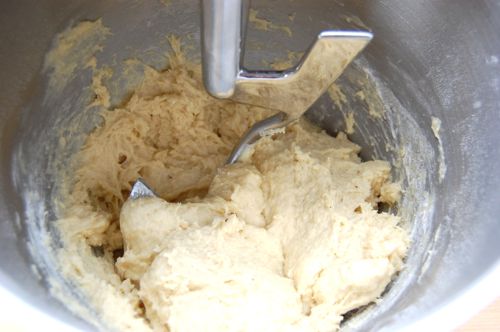
You want a dough that’s elastic, somewhat sticky, and adheres to the bottom of the bowl as the dough hook goes around (something like brioche dough). If it’s very wet and sticky, add more flour an 1/8 cup or so at a time.
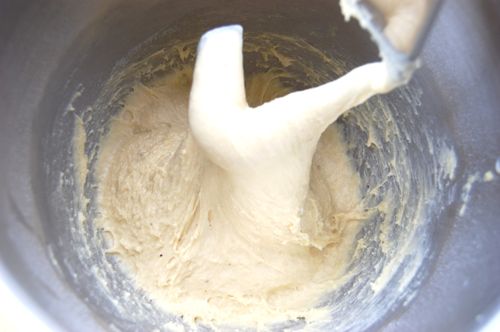
Transfer the dough to a lightly oiled bowl, cover it with plastic and let it rise until almost doubled, about an hour. Meanwhile, preheat your oven to 375.
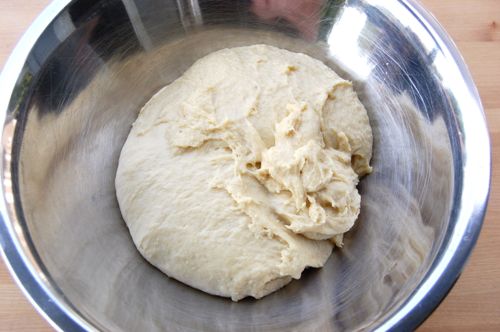
Weigh out the dough to 1 to 1.5-ounce pieces…

…roll them into balls and let them rest about 20 minutes.
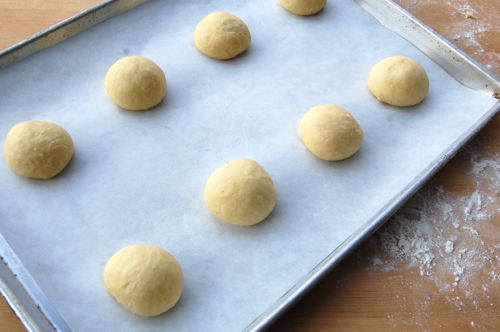
Collect your fillings. Now, using the tips of your fingers, make a depression in the center of the dough ball.
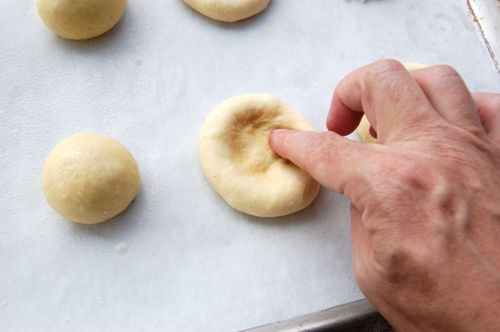
Fill that depression with about a tablespoon of a filling of your choice: poppyseed, prune, cottage cheese, or a jam of some sort (see fillings menu under the Pastry Components section to the left). You can also use some cooked fruit if you wish, just be sure that you take precautions to keep the filling from weeping moisture into the dough. Stir a little extra sugar into it, a couple teaspoons of cornstarch, or both.
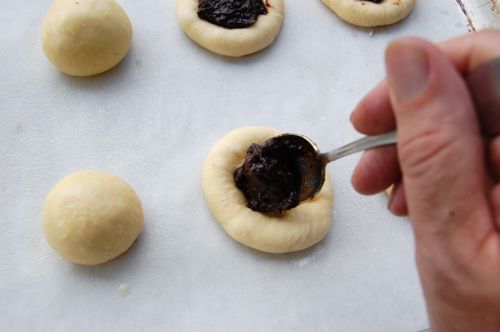
Let them sit about 15 minutes to get a bit puffier. At that point brush on a little beaten egg and sprinkle on some streusel. No need to be be neat about it.

Bake for about twenty minutes until golden. Serve warm if possible.
VARIATION 1: For roll-style kolache, divide the risen dough into two pieces. Roll each into a rectangle, apply a filling of your choice and roll the rectangle up jelly-roll style. Slice the roll with a piece of dental floss as you would cinnamon rolls, and lay them out on parchment-lined sheet pans to proof. Apply streusel or a simple icing after baking.
VARIATION 2: For sausage kolache, wrap a dough ball around a small cocktail weenie, Vienna sausage or other small encased meat. Proof and bake as directed.
VARIATION 3: For giant kolache, make bigger balls and press out into larger disks. You can make these as big as tarts or pizzas of you wish, slice as such, and eat.
The Texas kolache we see at the festival are like this recipe, dimpled with filling, except they’re crammed together in a sheet cake pan before the second rise (like cinnamon rolls) and I think maybe the outsides are buttered so they can be pulled apart more easily.
Hey GL! It was my understanding that Texas-style were cinnamon roll-like. Your comment is making me think that isn’t so!
Thanks for checking in!
Nope, another Texan resident weighing in to say they’re like these and that this post is making me crave one something fierce.
Thanks for straightening me out, Vanesa! 😉
They could be described as cinnamon roll like, but it’s only how the individual kolace are placed close together in the pan and then rise into each other.
Texas is a HUGE state with quite the variety of Czeck, German and Polish populations – depending on where you go in Texas – the people even though they are of common decent have variations of their kolache recipes! I have found some to be more cinnamon roll-like, some danish-like, some that look exactly like the above (my grandmother makes them without streusel, but some places put streusel on them), and I have seen them rolled up instead of little boats. In all instances, I have seen the balls very close together so that they rise and bake into each other have then get pulled apart later. PS. never had one with icing on it….
Hey Jean! Thanks for the email. That’s all good information. Chicagoans like their koclache separated for reasons I don’t know. But I’ll bet the overall taste is quite similar. I’ll be on the lookout for some next time I’m in Texas!
Cheers,
– Joe
Ohmygosh, I love these! Little kolac… (however we’re spelling it today) buns!
These are unheard delicacies for me. My learning curve is travelling straight ahead. This looks absolutely beautiful.
Thanks HB! These are quite easy, as you can see…essentially just brioche with jam on the top. You might want to give them a try one day!
Thank you for the email!
– Joe
My Czech grandma made these when I was young and I loved them…my favorites were cottage cheese, poppyseed, prune and apricot. The strusel is a must to be a true Czech kolacky. Thanks for the recipe. This looks and sounds exactly like the ones the Czech babas (old women or grandmas in Czech) made in my neighborhood growing up. I plan to make them this weekend!
Terrific CIndy! Let me know what you think!
– Joe